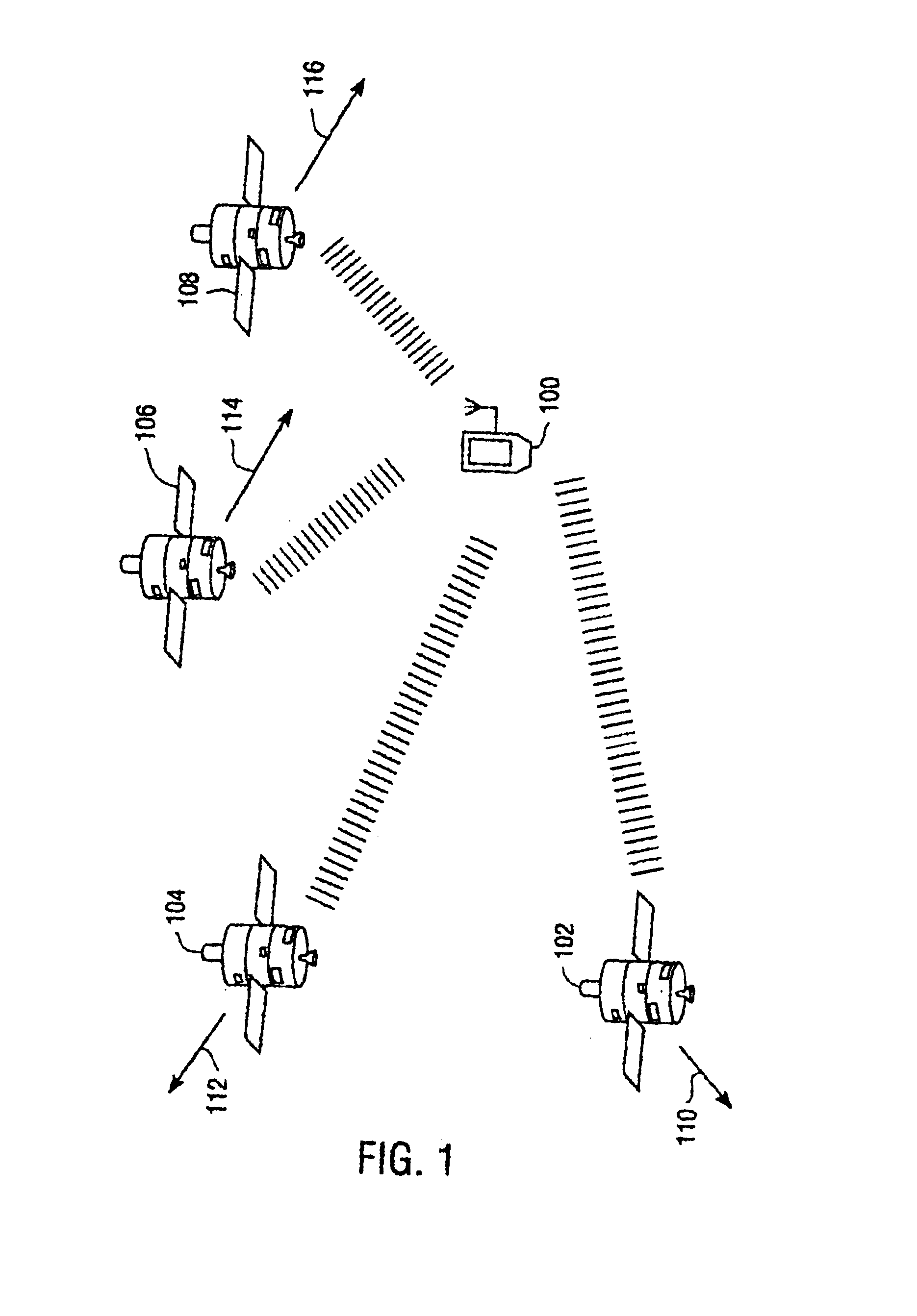Method and apparatus for real time clock (RTC) brownout detection
a technology of real-time clock and brownout detection, which is applied in the field of method and apparatus for real-time clock brownout detection, can solve the problems of inaccurateness, consuming valuable processor resources, and gps receiver units with very limited power resources
- Summary
- Abstract
- Description
- Claims
- Application Information
AI Technical Summary
Benefits of technology
Problems solved by technology
Method used
Image
Examples
Embodiment Construction
[0030]FIG. 1 illustrates an example environment for operation of a global positioning system (GPS) receiver. FIG. 1 shows a GPS receiver unit 100 and four GPS satellites 102, 104, 106 and 108. Each satellite 102, 104, 106 and 108 is transmitting to the GPS receiver unit 100. Satellite 102 is moving towards the GPS receiver unit 100 along the line of sight (LOS) 110 at a velocity νa+; satellite 104 is moving away from the GPS receiver unit 100 along the LOS 112 at a velocity νb− and satellite 106 is moving away from the GPS receiver 100 along the LOS 106 at a velocity νc−. Consequently, assuming a carrier wavelength of λ, the transmission from satellite 102 experiences a positive Doppler shift of νa+ / λ; the transmission from satellite 104 experiences a negative Doppler shift of νb− / λ; and the transmission from satellite 106 experiences a negative Doppler shift of νc− / λ.
[0031]Satellite 108 is similarly moving away from the GPS receiver unit 100 along the LOS 116 at a velocity νd−. Inf...
PUM
 Login to View More
Login to View More Abstract
Description
Claims
Application Information
 Login to View More
Login to View More - R&D
- Intellectual Property
- Life Sciences
- Materials
- Tech Scout
- Unparalleled Data Quality
- Higher Quality Content
- 60% Fewer Hallucinations
Browse by: Latest US Patents, China's latest patents, Technical Efficacy Thesaurus, Application Domain, Technology Topic, Popular Technical Reports.
© 2025 PatSnap. All rights reserved.Legal|Privacy policy|Modern Slavery Act Transparency Statement|Sitemap|About US| Contact US: help@patsnap.com



